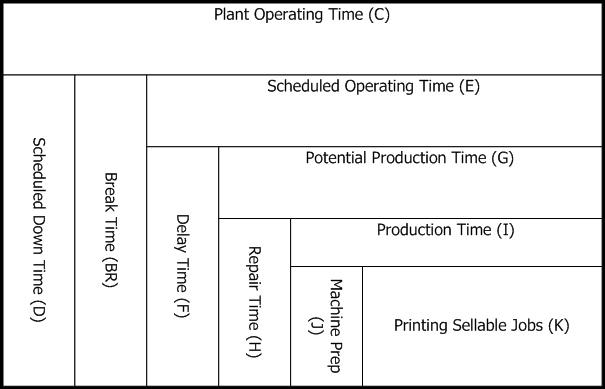Written by Joel Basa
eMarketing Manager
Xerox Corporation
We’ve heard this statement many times, “the proof is in the pudding.” I’m not sure where that statement originated from but here in the business world we know measurement and data tells us so much. Data indicates whether we’re doing the right thing, the wrong thing, the best thing or the better thing. The same goes for measuring productivity of a digital press. The collection of data and then the analysis that follows is critical to making your print operation run more efficient and more profitable.
Spencerlab recently released their independent benchmarking study to estimate the level of digital press Availability by determining Potential and Actual production time measurements of a sampling of digital presses. Availability = Actual Production Time divided by Potential Production Time. Ideally this percentage is 100% but that’s nearly impossible. However, what I found most intriguing about their methodology were the factors that reduced the amount of Actual Production Time.
Here are some of those factors according to Spencerlab:
- Press Error Waste
- Quality Control
- Job Setup
- Waiting for Press
- Paper Jam
- Planned Maintenance
- Consumable Change
- Service
- Repair
- Morning Routine
What are some other factors that affect the amount of potential production time? Are you measuring these factors? If so, how? Please read the Spencerlab report for a detailed description of their methodology and the end results.
Interested in similar topics? You may want to check out:
- How do you measure the productivity of your digital press? (Part 1)
- How do you measure the productivity of your digital press? (Part 2)
- The Wrong Metric – When The Best Looks Like the Worst
- What’s the most important aspect of your shop’s productivity? Staff? Training? Equipment? Procedures?
- The Pros and Cons of the Sales Per Employee Ratio



It would be interesting to see an analysis of a Xerox 1000. I suspect it would beat all of the machines in the Spencerlab report.
There is an analysis of the Xerox Color 800. See http://www.spencermetrics.com/collateral/SpencerLab-Xerox_EPC_WhitePaper_Jan2012.pdf